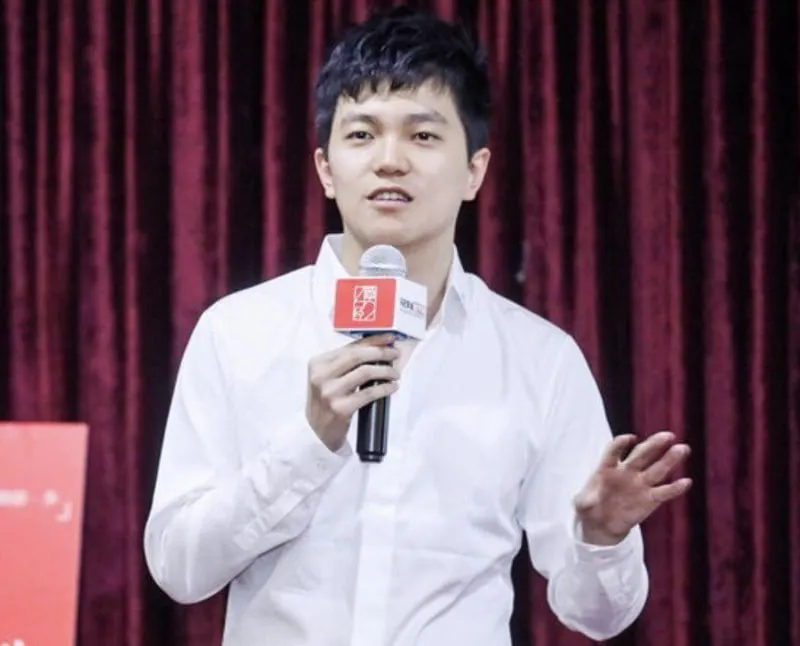An already crowded field of public blockchains competing for app developers and elusive app users just welcomed another contender: The Internet of Services Token, or IOST.
Headquartered in Beijing with satellite offices across the globe, from Tokyo to San Francisco, IOST launched its mainnet this week with a strategy that it hopes will distinguish its chain from competitors such as IOTA, EOS, Tron, and even Ethereum. It has more than 150 global partnerships with some of the biggest players in crypto, and a number of decentralized applications ready to go, right out of the box, with still others set for release on March 10.
The project is led by the ambitious Jimmy Zhong, a 24-year-old wunderkind who sold his first company, Find Inc—a digital marketplace for university students to sell class notes—for $40 million while he was still in college. And the 500-startups alum has big plans for his blockchain network:
Within two weeks, IOST will already hold its own against the leading chains in terms of active dapp users, says Zhong.
And by midsummer? Zhong tells Decrypt he expects IOST to become the biggest blockchain gaming platform period—as well as a gateway to mainstream crypto adoption.
The launch of the IOST mainnet comes six months ahead of schedule, according to a statement from the IOS Foundation, the company founded by Zhong that developed the “application-friendly, next generation” blockchain.
The focus on developing usable technology that delivers tangible value for consumers—including blockchain-based games that reward players in crypto—comes at an opportune time for the market.
Amid a long crypto winter and a 90 percent drop in prices, blockchain businesses have been forced to confront the reality that buzzwords are no longer enough to drive interest. Companies must build real products for real people to succeed in the decentralized future, and the underlying networks that support these products must be designed with this in mind.
Zhong appears to understand this, noting in a statement that the “real value of a network” depends on its consumer-facing applications, and not just the technology that does the work of processing those products in the background. “Ultimately, mainstream users do not choose operating systems—they choose the applications which bring the most efficiency and enjoyment into their daily lives,” he said.
How IOST works: What is "proof of believability?"
But that isn’t to say that the tech itself doesn't play a key role. Zhong tells Decrypt that IOST’s secret sauce is its own special blend of blockchain consensus protocols called “proof of believability,” which combines elements of proof-of-work and proof-of-stake systems.
Transactions on the IOST network are “delegated between believable and normal nodes,” Zhong explains. “Believable nodes” are chosen based on a “believability score”—itself determined by a combination of factors, like the amount of IOST in the node, the number of positive reviews the node has received, and previous “good” actions.
“The IOST network will randomly, and algorithmically, select a set number of validators for each block with believable nodes processing the transactions first. Once their batch is finished, samples of their outcomes are validated and verified by normal nodes, with PoB constantly rotating between nodes and block production.”
This is what allows for “more efficient and decentralized transactions across the network, and therefore higher speeds,” says Zhong, and the key to developing a scalable platform that doesn’t sacrifice decentralization at the cost of performance. “IOST’s PoB system offers much higher performance than first and second generation projects like Bitcoin and Ethereum, but also retains significant decentralization, where hundreds, if not thousands of nodes participate in block production each day,” Zhong claims.
The next generation of blockchain gaming?
The result is a network that is “scalable, efficient, and secure,” says IOST’s CEO, which is essential for creating, among other things, a “more seamless and transparent gaming experience on blockchain networks.”
IOST aims to become the “most developer-friendly platform to build on,” Zhong says, and the platform is particularly keen on laying out the red carpet for game developers who are interested in entering the blockchain space.
The strategy isn’t exactly unheard of. Tron’s Justin Sun has previously called online games “crucial” for the future of the decentralized web, and Tron is heavily invested in the blockchain gaming industry—dropping more than $100 million in a fund to develop games on its native chain over the next three years.
IOST’s war chest is considerably more modest. Since January 2018, it’s been armed with $35 million to build out its mainnet, which was raised through a private toke sale led by Chinese investors such as Sequoia China, ZhenFund, and Huobi. Last June, it got a boost from startup incubator Bluehill, which raised $50 million to establish a fund to support IOST projects—though only a fraction of that is being spent developing games, with the rest going toward an array of projects to strengthen the “internet of services” infrastructure, from wallets and decentralized exchanges to user-generated content and social media platforms.
Still, IOST has made considerable progress since launching its testnet in 2017, and Zhong says the network he helped create is poised to become the “fourth most playable public blockchain platform” in the next few weeks—presumably behind only Ethereum, EOS, and Tron. Games set to go live include “Team Joy,” a blockchain-based, multiplayer version of the classic “gluttonous snake” game; Realm X, a create-your-own-content RPG; and CryptoNinja, a castle-invading, treasure-robbing competitive multiplayer. Every creation in each of these games will be “on-chain assets and eligible for subsequently generated profits,” says Zhong.

Zhong adds that IOST has an online community of more than 200,000 people who are eager to expand its gaming ecosystem. “It is hard to predict, but we are aiming to reach more users than any current blockchain game, within our first six months,” he says.
To do that and more, IOST plans to leverage the pre-mainnet success of its two most popular applications: a crypto news aggregator that rewards its users in tokens called Berminal, and a spin-off social-media product called Bermi. Each dapp already boasts millions of users—with Berminal claiming a reach of nearly 2.5 million monthly users within just six months of going live.
“Beyond games, and through our other projects and strategies, including Berm and Berminal, we plan to onboard over 2 million users, many of which will have easy access to the wide range of DApps available on IOST,” says Zhong.
While crypto enthusiasts “mine or trade coins on exchanges,” Zhong says IOST products like Bermi aim to “make cryptocurrencies more relevant to wider audiences in a way that is more familiar and appealing to the everyday user.”
A blockchain that people will actually use and can scale to meet the demand? Nothing like a few crypto ninjas and collectible kitties to stress test bold plans.

